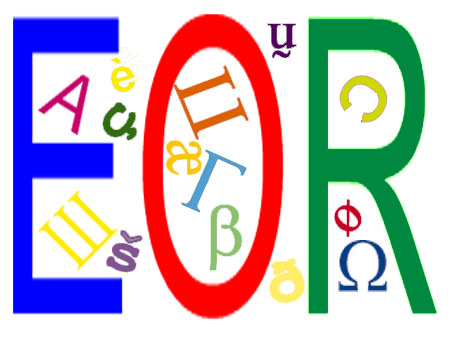
Introduction
European Ordering Rules
 ENV_13710 passed its ballot in December_1999
ENV_13710 passed its ballot in December_1999
All drafts online
Machine-readable table online
Links to important documents and further information
European Ordering Rules (EOR)
What it is all about
Here you can find information on European Ordering Rules,
a forthcoming standard that strives to give both users and
implementors of all kinds of indices unequivocal guidelines of how these should be ordered.
Sorting is primarily a service for users to facilitate their access to information by presenting it in a structured way.
It may contain subdividing information by subject matters, including
several registers in a book, splitting a phone book into several
sections, one for each town that falls into its purview, having multiple indices in a library...
Ordering - the arrangement of information in alphabetical sequence - is
in most circumstances an integral part of this procedure.
«Alphabetical sequence» sounds simple enough - ABC...XYZ. So, why bother
about it and waste time and other resources on such obvious a task?
The answer is, of course, that the solution is not so obvious as it
seems at first. It is simple as long as only the basic Latin letters A-Z are concerned. We can agree quickly on
- order,
ordered,
orderly
Yet: What about the French equivalents, (elle/il) ordonne and (elle/il a) ordonné?
As soon as further European letters such as the Thorn (þ) or the
Eth (ð) enter the game, as they frequently do in multilingual
environments, as soon as we must deal with accented letters even as
simple as é or ä, we must invest some thoughts into how we would
like them to be ordered. Difficulties multiply if we want to mix
words from several scripts such as Greek or Cyrillic. This situation
is an everyday problem of computer systems, libraries, catalogues, phone books..., in
short: a situation that most of us are likely to encounter in our
increasingly interconnected world.
CEN TC304's project on European Ordering Rules
That is where the work of the project team on comes in. We deal with
multilingual ordering rules for Europe. For us,
user friendliness and clear implementation guidelines
are top priorities. This work is part of the
program of CEN's - the European Committee for Standardization's - committee
TC304 on "European Localization Requirements" which strives to ensure that European interests are
taken into account, especially in information technology. It is based on the MES-2
character repertoire, a subset of ISO 10646 / Unicode that basically covers the Latin, Greek and Cyrillic letters needed for the official languages of the European Union,
the European Free Trade Association (EFTA) and for correspondence with
the European parts of the former Soviet Union.
It is planned to extend the scope of the ordering rules to MES-3,
which has a repertroire that is designed to cover the needs of all European languages.
Technically, ENV 13710 is a "profile" of the International String Ordering standard ISO/IEC 14651:2001 that
establishes a syntax for defining ordering rules. It is technically equivalent to the Unicode Collation Algorithm.
Important documents and information
More information on the future European Ordering Rules and their IT
implementations including an introduction in plain English is or will be available.
![]() For further information or
criticism please contact the editor of the project team, Marc Wilhelm Küster
For further information or
criticism please contact the editor of the project team, Marc Wilhelm Küster
 ENV_13710 passed its ballot in December_1999
ENV_13710 passed its ballot in December_1999
![]() For further information or
criticism please contact the editor of the project team, Marc Wilhelm Küster
For further information or
criticism please contact the editor of the project team, Marc Wilhelm Küster